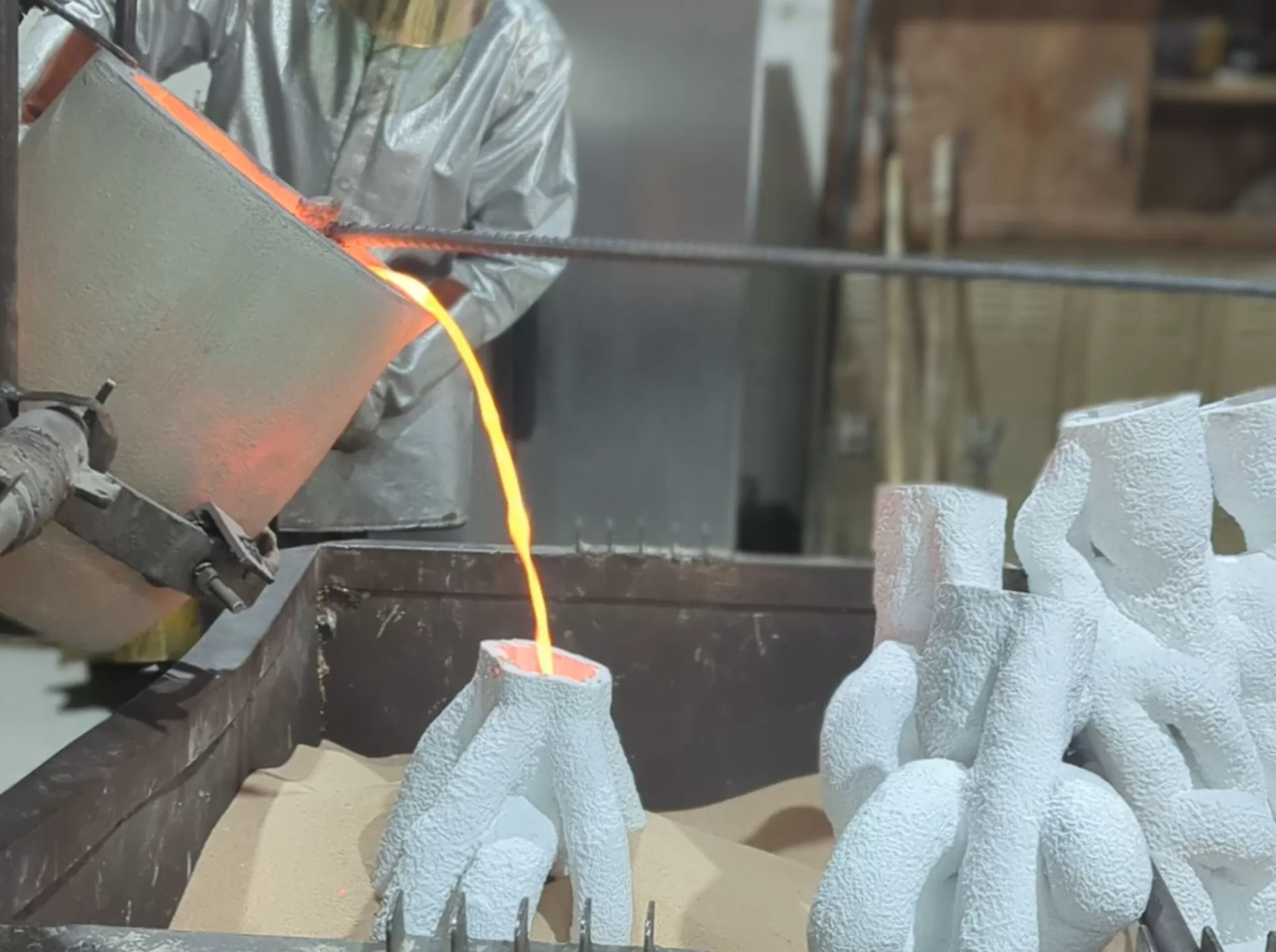Bronze Casting or Lost Wax Casting
Bronze Casting
Bronze is the most popular metal for cast metal sculptures; a cast bronze sculpture is often called simply a “bronze”.
Common bronze alloys have the unusual and desirable property of expanding slightly just before they set, thus filling the finest details of a mold. Their strength and ductility (lack of brittleness) is an advantage when figures in action are to be created, especially when compared to various ceramic or stone materials (such as with marble sculpture). These qualities allow the creation of extended figures, as in Jeté, or figures that have small cross sections in their support, such as the equestrian statue of Richard the Lionheart. Modern statuary bronze is 90% copper and 10% tin; older bronze alloys varied only slightly from this composition
The Lost Wax Casting
Lost-wax casting sometimes called by the French name of cire perdue (from the Latin cera perduta) is the process by which a bronze or brass is cast from an artist’s sculpture; in industrial uses, the modern process is called investment casting. An ancient practice, the process today varies from foundry to foundry, but the steps which are usually used in casting small bronze sculptures in a modern bronze foundry are generally quite standardized.
More information:
- Casting – Metalworking
- Casting process
- Expendable Mold Casting
- Non-Expendable Mold Casting
- Patina – Patination
Casting Metals
- Bronze
- Silver
- Gold
- Stainless Steel
- Aluminum
If you have any questions regarding our process, please feel free to email us at sales@americanbronze.com or give us a call.
International 00+1+407-328-8090
Toll-Free 1+800-881-8090
Local 407-328-8090

